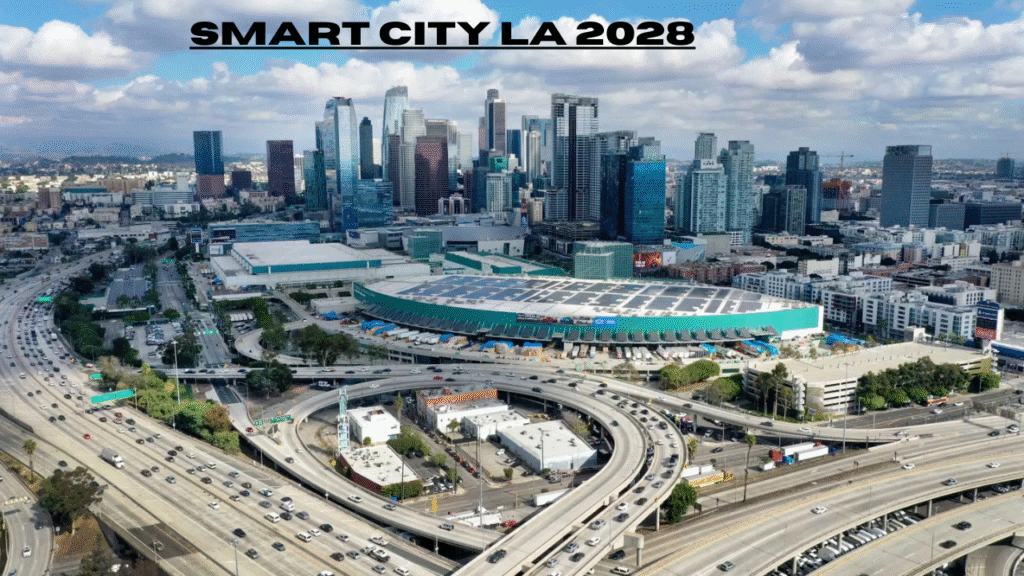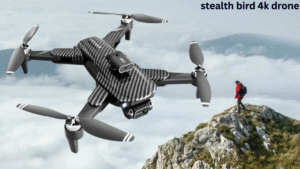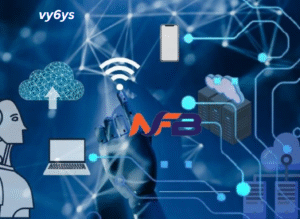Smart City LA 2028: How Los Angeles Is Transforming for the Future
As cities around the globe rush toward technological innovation and urban efficiency, Los Angeles is setting its sights on becoming a leading smart city by 2028. This ambitious transformation aligns with the upcoming 2028 Summer Olympics, providing a concrete deadline and global stage to showcase LA’s advancements. Smart cities leverage data, digital technology, and sustainable infrastructure to enhance the quality of life for citizens, increase government efficiency, and ensure environmental responsibility.
The Smart City LA 2028 initiative aims to reimagine how Angelenos live, commute, and interact with their city. By integrating intelligent systems and citizen-focused technology, LA is not only preparing to welcome millions of visitors for the Olympics but also creating long-term benefits for its residents. From smarter traffic management to green energy solutions and digital governance, LA’s roadmap is multifaceted and deeply transformational. This article explores the vision, technologies, infrastructure developments, Olympic preparations, and challenges associated with Smart City LA 2028.
The Vision Behind LA 2028: Why Go Smart?
The decision to evolve into a smart city is not just a technological endeavor—it is a strategic move driven by the upcoming 2028 Summer Olympics. Hosting the games presents a unique opportunity to upgrade infrastructure, reduce environmental impact, and streamline public services. The Los Angeles city government, in collaboration with private partners, has laid out a long-term vision that emphasizes sustainability, digital inclusivity, and public engagement.
Central to this vision are three pillars: sustainability, equity, and innovation. LA plans to reduce its carbon footprint significantly by investing in renewable energy, electric transportation, and energy-efficient building systems. Social equity is another cornerstone—smart city solutions are being developed to bridge the digital divide, ensuring all communities, including underserved areas, benefit from these advancements.
Moreover, innovation hubs across the city are facilitating public-private partnerships, where startups and tech companies can test scalable solutions that address urban challenges. Initiatives like the Urban Movement Labs and the city’s Open Data platform underscore LA’s commitment to transparent, citizen-centric innovation. By 2028, LA aims to serve as a global example of how cities can harness technology to foster resilience, inclusivity, and sustainability.
Core Technologies Powering Smart City LA 2028
To achieve its vision, LA is deploying a range of cutting-edge technologies designed to transform urban living. At the heart of this transformation is the Internet of Things (IoT), a network of interconnected devices that collect and share data in real time. Smart sensors are being embedded in roadways, traffic lights, and public infrastructure to monitor everything from traffic flow to air quality. These insights enable city officials to make data-driven decisions that enhance efficiency and safety.
Equally important is the rollout of 5G connectivity, which serves as the backbone for most smart city applications. With ultra-fast internet speeds and low latency, 5G enables real-time communication between devices and systems, from autonomous vehicles to emergency response networks. This connectivity allows for seamless coordination and responsiveness, especially vital during large-scale events like the Olympics.
Artificial Intelligence (AI) and Machine Learning (ML) are being integrated into municipal services to predict trends, optimize operations, and personalize citizen experiences. For example, AI-driven platforms can forecast energy demand, detect anomalies in water usage, or manage waste collection routes more efficiently. Meanwhile, smart grids are being developed to support renewable energy sources, balancing demand and supply dynamically across the city.
The city is also investing in transportation innovations, including electric and autonomous vehicles. These technologies aim to reduce congestion and lower emissions while improving mobility options for residents. In essence, the technological backbone of Smart City LA 2028 is not just futuristic; it is foundational for building a sustainable and responsive urban environment.
Urban Upgrades: How LA’s Infrastructure is Evolving

Smart infrastructure is the physical manifestation of LA’s digital transformation. One of the most visible changes is in mobility. The Los Angeles Metro is undergoing massive upgrades, including real-time tracking, digital ticketing systems, and expanded transit lines to underserved neighborhoods. Bike-sharing and electric scooter programs are being integrated into a unified mobility platform, allowing users to plan multi-modal journeys with ease.
Urban design is also embracing sustainability. Green roofs, solar panels, and smart lighting systems are being incorporated into both public buildings and new developments. These eco-friendly upgrades not only reduce energy consumption but also enhance urban aesthetics and resilience against climate change. City planners are prioritizing pedestrian-friendly spaces and smart parking solutions that reduce the time and emissions spent searching for spots.
Digital governance is another critical focus area. Through open-data portals and mobile apps, residents can now access city services, report issues, and participate in policy decisions more conveniently. Smart policing tools, such as predictive analytics and body cameras, are enhancing accountability while streamlining law enforcement operations. Emergency services are equipped with AI-enhanced dispatch systems that optimize response times and resource allocation.
Affordable smart housing is being developed to address the city’s housing crisis without compromising on technological integration. Modular construction, energy-efficient appliances, and embedded connectivity ensure these homes are both livable and future-proof. As a result, LA is creating a model where infrastructure evolves in sync with technological advancement and community well-being.
Preparing for the 2028 Olympics: What to Expect
The 2028 Olympics serve as both a deadline and a showcase for LA’s smart city evolution. Preparing for such a massive international event demands extraordinary coordination, which is where smart city technologies shine. Smart stadiums equipped with high-speed Wi-Fi, immersive AR/VR experiences, and automated crowd control systems will redefine the spectator experience. Ticketing, navigation, and language translation apps will make the city more accessible for global visitors.
Transportation will be a focal point, with autonomous shuttles, dedicated Olympic lanes, and real-time transit updates ensuring smooth travel across venues. Smart traffic lights and predictive routing will help mitigate congestion, while multilingual AI assistants provide real-time information to tourists and residents alike. The goal is to create a seamless, enjoyable, and environmentally responsible Olympic experience.
Public safety will also see major advancements. Surveillance systems using AI and facial recognition, alongside drone monitoring, will enhance situational awareness and emergency response. Medical services will utilize telemedicine and mobile health units powered by IoT data for rapid intervention. These measures are designed not only to secure the games but to leave a lasting legacy of improved public safety infrastructure.
The Olympics will act as a test bed for many of LA’s smart initiatives. Success during the games will validate investments and provide a blueprint for other cities looking to modernize in a sustainable, inclusive way.
Challenges and Criticisms of LA’s Smart City Push
Despite its ambitious plans, Smart City LA 2028 faces several challenges. Chief among them are concerns about surveillance and data privacy. The deployment of thousands of sensors and AI-powered cameras has raised fears of excessive monitoring and data misuse. Critics argue that without robust regulations, these technologies could erode civil liberties and disproportionately affect marginalized communities.
The digital divide remains another critical issue. While LA is investing in public Wi-Fi and digital literacy programs, many low-income neighborhoods still lack reliable access to the internet and smart devices. Bridging this gap is essential to ensure that smart city benefits are equitably distributed. Otherwise, there’s a risk that technological progress could widen social disparities rather than close them.
Budgetary constraints and bureaucratic inertia also pose significant hurdles. Implementing large-scale smart city initiatives requires substantial investment and inter-agency collaboration. Delays, cost overruns, and inconsistent leadership can derail progress. Additionally, some community members are skeptical of the city’s priorities, arguing that basic services and affordable housing should come before tech-centric upgrades.
Balancing innovation with community needs is key to the long-term success of LA’s smart city agenda. Transparent governance, inclusive planning, and ethical use of technology will be crucial in addressing these concerns while moving forward with the city’s transformative vision.
Conclusion
Smart City LA 2028 represents a bold reimagining of urban life in one of the world’s most iconic cities. Driven by the upcoming Olympics, LA is leveraging technology to improve infrastructure, enhance sustainability, and provide better services for its residents. From AI and IoT to green architecture and digital governance, the city’s transformation is as comprehensive as it is ambitious.
Yet, success will depend on how well LA navigates challenges around equity, privacy, and community engagement. By focusing on inclusivity and transparency, LA has the potential to become a global benchmark for smart urban innovation. Whether you’re a resident, visitor, or city planner elsewhere, Smart City LA 2028 offers valuable insights into the future of connected, sustainable urban living.
FAQs
What is Smart City LA 2028?
Smart City LA 2028 is Los Angeles’ initiative to become a fully connected, technology-driven, and sustainable city in preparation for the 2028 Summer Olympics.f
What technologies are being used in LA’s smart city transformation?
Core technologies include IoT, 5G, AI, smart grids, autonomous vehicles, and digital governance platforms.
How will the 2028 Olympics influence LA’s smart city plans?
The Olympics provide a timeline and global stage to implement and showcase smart infrastructure, mobility solutions, and public safety advancements.
What are the main concerns about Smart City LA 2028?
Key concerns include surveillance, data privacy, digital inequality, and whether the investments will truly benefit all communities equally.
Will smart city upgrades continue after the Olympics?
Yes, many of the improvements are designed for long-term impact, aiming to improve quality of life and city operations well beyond the 2028 Games.
You May Also Read: https://otswroldtime.com/best-sander-for-furniture/














Post Comment